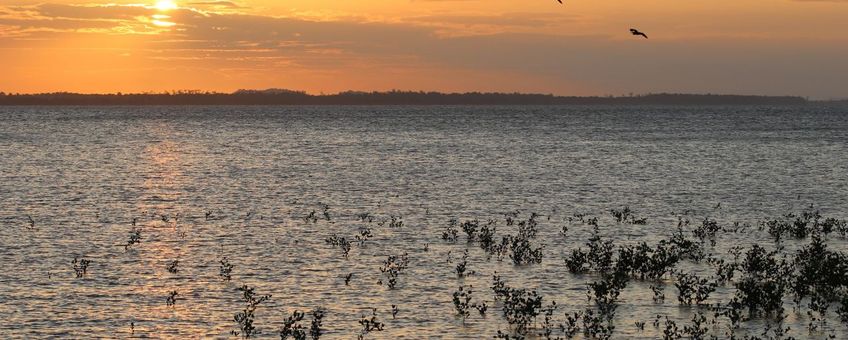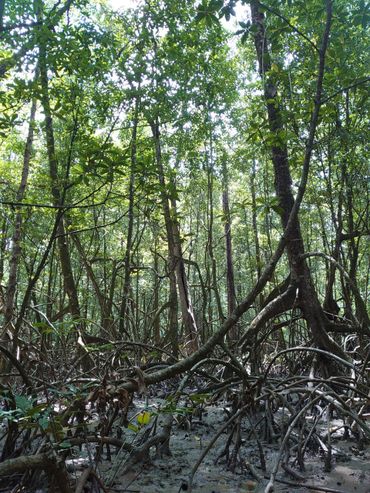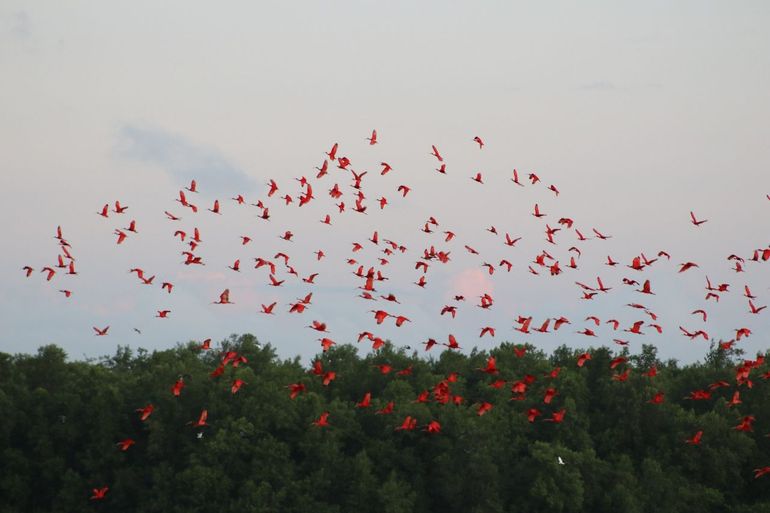
Historic climate extremes along northeast coast of South America
Institute for Biodiversity and Ecosystem Dynamics (IBED)As today, just before the last ice age, around 125 thousand years ago, the coastal waters of North America were home to mangrove forests that harboured a rich diversity of fish and other marine animals. Thousands of years later, during the ice age, the sea water had subsided and the coastline had moved seaward. In the area, dry savannahs then stretched, as fossil finds made in Kourou, French Guiana, prove. Until now, nothing was known about the coastal fauna and flora around the equator in the Atlantic Ocean from this period.

Two climatic extremes
The research is a collaboration between palaeontologists, biologists and geologists from universities in 13 different countries, including the University of Amsterdam (UvA). They made their finds while working at the launch base of the European space agency ESA, where the new Ariane 6 rocket will be launched later this year. The scientists found fossils of 270 species of plants, animals and micro-organisms. Among them were remains of bivalve molluscs, bony fish, crustaceans, sharks, foraminifers (calcareous plankton), a marine-dwelling group called bryozoans and large quantities of plants.
Paleoecologist and geologist Carina Hoorn of the UvA's Institute for Biodiversity and Ecosystem Dynamics (IBED) and her team reconstructed the vegetation of both periods. "In this short time, we find the evidence for two peaks in this geological section," says Hoorn. "The environmental record and fossil assemblage of 125 thousand years ago is unique for the equatorial coastline, and one of the best examples in northern South America. Moreover, deposits from the subsequent last glacial, starting around 115 thousand years ago, are also present here."
Similarity to present-day Caribbean
The contribution of the Amsterdam researchers was to analyze fossil pollen. Hoorn: "In the warm period, we find an amazingly rich assemblage of plants. Moreover, the faunal assemblage presents many similarities with the present-day Caribbean, northwest of South America. The coastline of French Guiana, Suriname and Guyana lies between the mouths of the Orinoco and Amazon rivers. Now, that connection with the Caribbean is largely closed due to sediment supply by these major rivers. Apparently, before the last ice age, less mud seems to have reached the ocean."

Saddles and crosses
In the following period, after the lowering of the sea level and the seaward displacement of mangroves, a dry savannah landscape emerged. Hoorn: "Between 110 and 50 thousand years ago, there is evidence of drier conditions. Our co-authors also found charcoal, indicating that there were occasional natural fires."
The researchers managed to reconstruct a more detailed picture of the plant composition during the final phase of the Ice Ages by analyzing so-called phytoliths, glassy silica particles that reinforce the leaves of grasses, among others. PhD candidate Nina Witteveen: "Phytoliths are the particles that can make you cut yourself on leaves of grasses. They have their own characteristic shape: under the microscope, the phytoliths of grasses look like tiny saddles and crosses, those of palms like circles with spines. So, we can use phytoliths to retrace what used to grow there."
Phytoliths give a good picture of local vegetation, Witteveen explains. "Unlike pollen grains, phytoliths are not dispersed by the wind. After a plant dies, phytoliths end up in the soil right where the plant stood."
Tip of the iceberg also for Suriname
In the period between the last two ice ages, from 128,000 to 116,000 years ago, global sea levels were around 4 to 6 meters higher than today and average temperatures were around 2 degrees higher. Conditions that are also predicted for the early 22nd century. There is therefore a risk that the coastline of French Guiana and neighbouring Suriname will face similar sea level rise that could lead to flooding.
According to Hoorn, the results of the study could be extended to vegetation in Suriname during the same time periods as studied in French Guiana. "In French Guiana, fossil bones of large animals were once found. That was probably just a tip of the iceberg. The work in French Guiana can be a great motivation for science in Suriname to also research further this fascinating part of geological history."
Text: IBED
Photos: Daniel Guerra; Matteo Sciumbata
